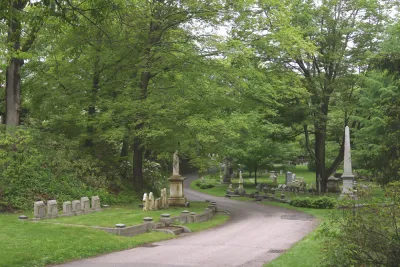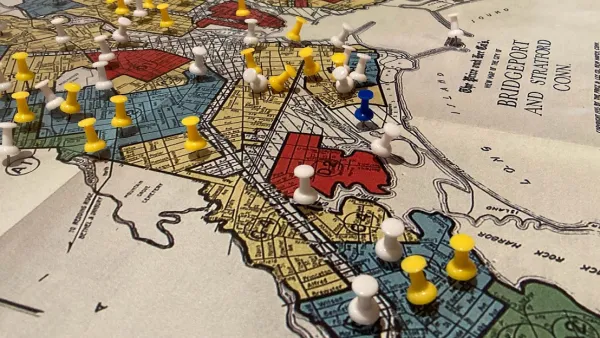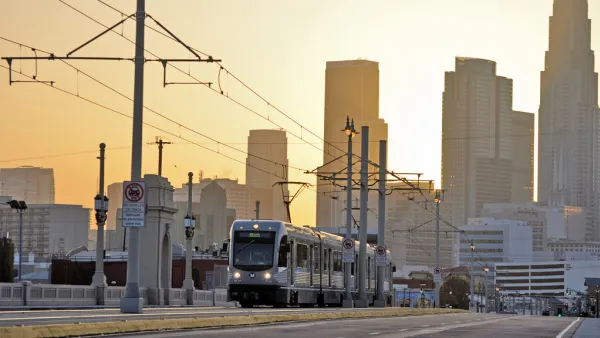Tracing the story of the American suburban form.

An article by Emma Newcombe in Governing describes the history of the American garden cemetery, starting with the Mount Auburn Cemetery outside of Boston, built in 1831 as the first of the sprawling rural cemeteries popular in the late 19th century.
As Newcombe explains, the early 1800s saw an increase in the sentimentality of Americans toward death and memorializing loved ones with pleasant, art-filled gardens, coupled with public health concerns about increasingly crowded urban burial grounds. Mount Auburn became a popular recreational site, with close to 60,000 visitors stopping in annually, and “By 1865, the United States had over 70 similarly landscaped cemeteries on the outskirts of cities, including Laurel Hill in Philadelphia, Green-Wood in Brooklyn and Mountain View in Oakland.”
The movement inspired a greater desire for urban parks and green spaces, with the New York state legislature setting aside 700 acres in New York City in 1853 that would become Central Park. Then, as the popularity of garden cemeteries and urban parks grew, developers started building America’s first planned suburbs, using similar principles to design new residential communities.
According to Newcombe, by the 20th century, rural cemeteries fell out of favor as maintenance costs grew and the Victorian fascination with death waned. Meanwhile, suburbs also became “far less picturesque and romantic than their 19th-century counterparts” as developers focused on cutting costs and building quickly, choosing “uniformity over picturesque asymmetry.”
FULL STORY: From Cemeteries to Suburbs: How a Romantic Movement Reshaped America

National Parks Layoffs Will Cause Communities to Lose Billions
Thousands of essential park workers were laid off this week, just before the busy spring break season.

Retro-silient?: America’s First “Eco-burb,” The Woodlands Turns 50
A master-planned community north of Houston offers lessons on green infrastructure and resilient design, but falls short of its founder’s lofty affordability and walkability goals.

Delivering for America Plan Will Downgrade Mail Service in at Least 49.5 Percent of Zip Codes
Republican and Democrat lawmakers criticize the plan for its disproportionate negative impact on rural communities.

Test News Post 1
This is a summary

Test News Headline 46
Test for the image on the front page.

Balancing Bombs and Butterflies: How the National Guard Protects a Rare Species
The National Guard at Fort Indiantown Gap uses GIS technology and land management strategies to balance military training with conservation efforts, ensuring the survival of the rare eastern regal fritillary butterfly.
Urban Design for Planners 1: Software Tools
This six-course series explores essential urban design concepts using open source software and equips planners with the tools they need to participate fully in the urban design process.
Planning for Universal Design
Learn the tools for implementing Universal Design in planning regulations.
EMC Planning Group, Inc.
Planetizen
Planetizen
Mpact (formerly Rail~Volution)
Great Falls Development Authority, Inc.
HUDs Office of Policy Development and Research
NYU Wagner Graduate School of Public Service




























